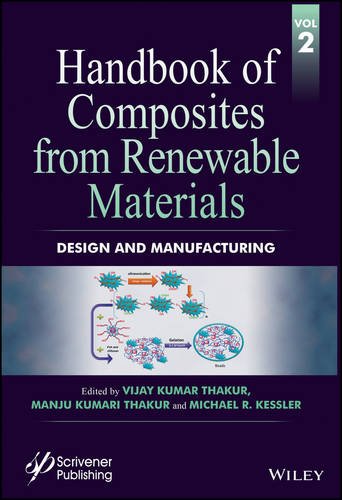

Most ebook files are in PDF format, so you can easily read them using various software such as Foxit Reader or directly on the Google Chrome browser.
Some ebook files are released by publishers in other formats such as .awz, .mobi, .epub, .fb2, etc. You may need to install specific software to read these formats on mobile/PC, such as Calibre.
Please read the tutorial at this link: https://ebookbell.com/faq
We offer FREE conversion to the popular formats you request; however, this may take some time. Therefore, right after payment, please email us, and we will try to provide the service as quickly as possible.
For some exceptional file formats or broken links (if any), please refrain from opening any disputes. Instead, email us first, and we will try to assist within a maximum of 6 hours.
EbookBell Team

0.0
0 reviewsThe Handbook of Composites From Renewable Materials comprises a set of 8 individual volumes that brings an interdisciplinary perspective to accomplish a more detailed understanding of the interplay between the synthesis, structure, characterization, processing, applications and performance of these advanced materials. The handbook covers a multitude of natural polymers/ reinforcement/ fillers and biodegradable materials. Together, the 8 volumes total at least 5000 pages and offers a unique publication.
This 2nd volume of the Handbook is solely focused on the Design and Manufacturing of renewable materials. Some of the important topics include but not limited to: design and manufacturing of high performance green composites; manufacturing of high performance biomass-based polyesters by rheological approach; components design of fibrous composite materials; design and manufacturing of bio-based sandwich structures; design and manufacture of biodegradable products from renewable resources; manufacturing and characterization of quicklime filled metal alloy composites for single row deep groove ball bearing; manufacturing of composites from chicken feathers and poly (vinyl chloride); production of porous carbons from resorcinol-formaldehyde gels: applications; composites using agricultural wastes; manufacturing of rice wastes-based natural fiber polymer composites from thermosetting vs. thermoplastic matrices; thermoplastic polymeric composites; natural fiber reinforced PLA composites; rigid closed-cell PUR foams containing polyols derived from renewable resources; preparation and application of the composite from alginate; recent developments in biocomposites of bombyx mori silk fibroin; design and manufacturing of natural fiber/ synthetic fiber reinforced polymer hybrid composites; natural fibre composite strengthening solution for structural beam component for enhanced flexural strength; high pressure resin transfer molding of epoxy resins from renewable sources; cork based structural composites; the use of wheat straw as an agricultural waste in composites for semi-structural applications and design/ manufacturing of sustainable composites.